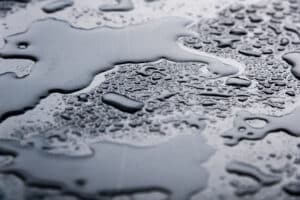Trusted Water Leak Detection Advice
Water leaks in your house could be increasing your water bill by as much as 10 percent and could be wasting up to 90 gallons of water every day.
The longer you wait to address a leak, the higher the chances that you’ll have to deal with major water damage issues and repairs.
To help prevent this, here’s everything you need to know about water damage, leak prevention, and locating the source of a leak, even if you can’t see it first-hand.
Know Your Enemy: The Effects of Water Damage Around the House
Building materials: When wood, drywall, plaster, and other building materials get wet for prolonged periods of time, they begin to rot and deteriorate.
A leak can cause such damage on a floor under a sink or toilet, on a wall encasing a pipe, and even on a ceiling that has a leaking pipe above it.Insulation, carpeting, and concrete: Just about every surface in your home is susceptible to mold.
That includes the aforementioned building materials, furniture, and even clothes.
It only takes 24 to 48 hours before mold can start growing on a wet surface.
Walls, paint, wallpaper, floors, and ceilings: When these materials get wet, they can warp, heave, peel, blister, and become otherwise deformed and distorted because of the moisture.
Although these effects don’t happen overnight, it doesn’t always take long for these surfaces to be damaged by leaks and water.
Pipes: Any item made of ferrous metal is susceptible to rusting when it’s exposed to water. That means the plumbing in your home is vulnerable to rust, damage, and corrosion if you have a leak.
What’s worse, the rust and corrosion can lead to pipe bursts, which can, in turn, lead to flooding and even more water damage.
Ways to Prevent Water Damage
The key to preventing this type of major water damage is preventing the leaks that cause it. Most importantly, fix any leaks as soon as you find them to stop them from getting worse.
Other things you can do around the house include:
- Avoid corrosive cleaners that could damage your pipes
- Don’t flush anything that shouldn’t go down the toilet or drain
- Keep the water pressure below 80 psi
- Replace damaged washers, flappers, pipes, and supply hoses as necessary
- Monitor tree roots that could conflict with plumbing
- Keep your water-using appliances and systems properly maintained
How to Find a Leak That’s Sprung
The final step in dealing with leaks in the house is knowing how to find the source. Start by checking your faucets, toilets, showerheads, and visible pipes for water and drips.
Then move on to checking the surfaces and building materials mentioned above.
Check for mold, rot, and discoloration.
Once you’ve finished inside the house, go outside and check your yard, garage floor, and driveway for puddles, dark spots, and spongy areas.
People are always looking for ways to save money, and leak prevention is an excellent way that homeowners can keep more money in the bank.
Not only will you save on your water bills, but you’ll also avoid expensive water damage and costly repairs.








